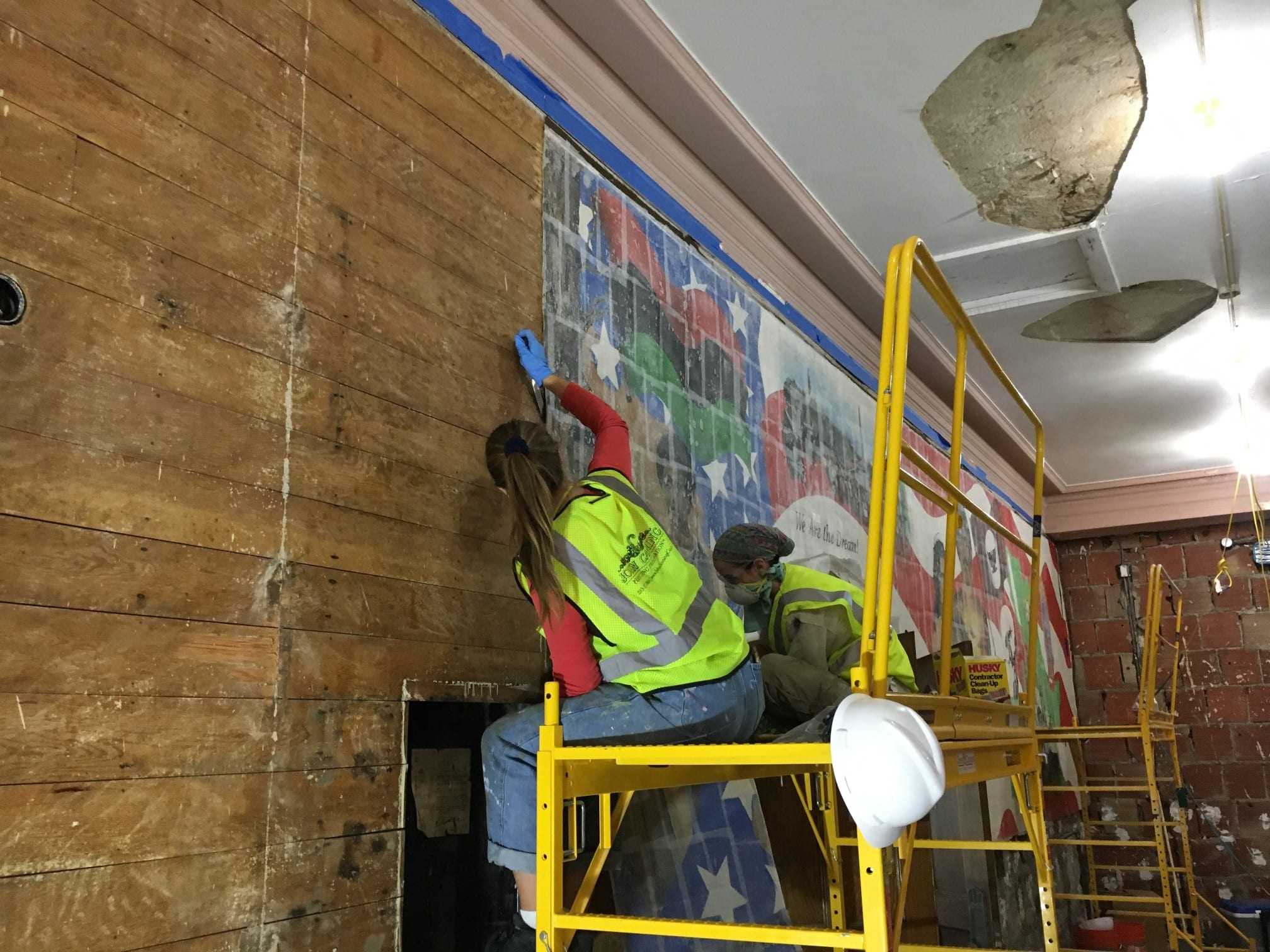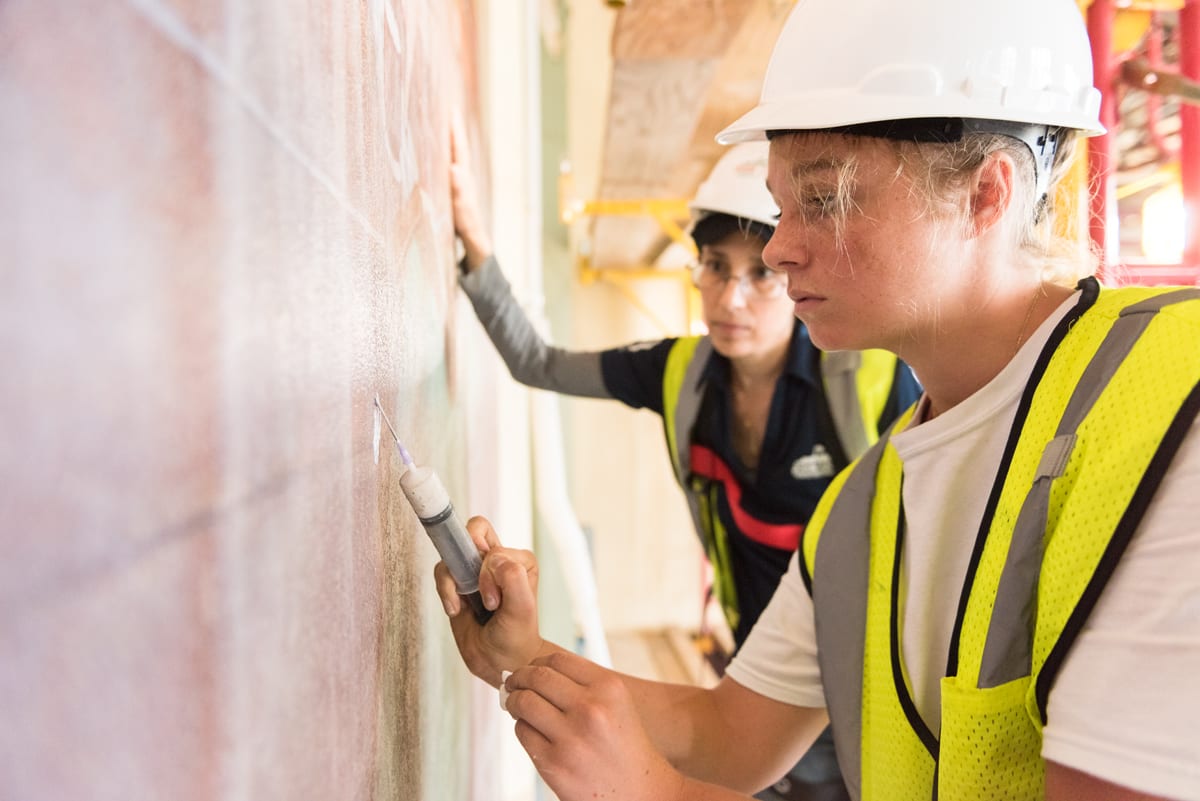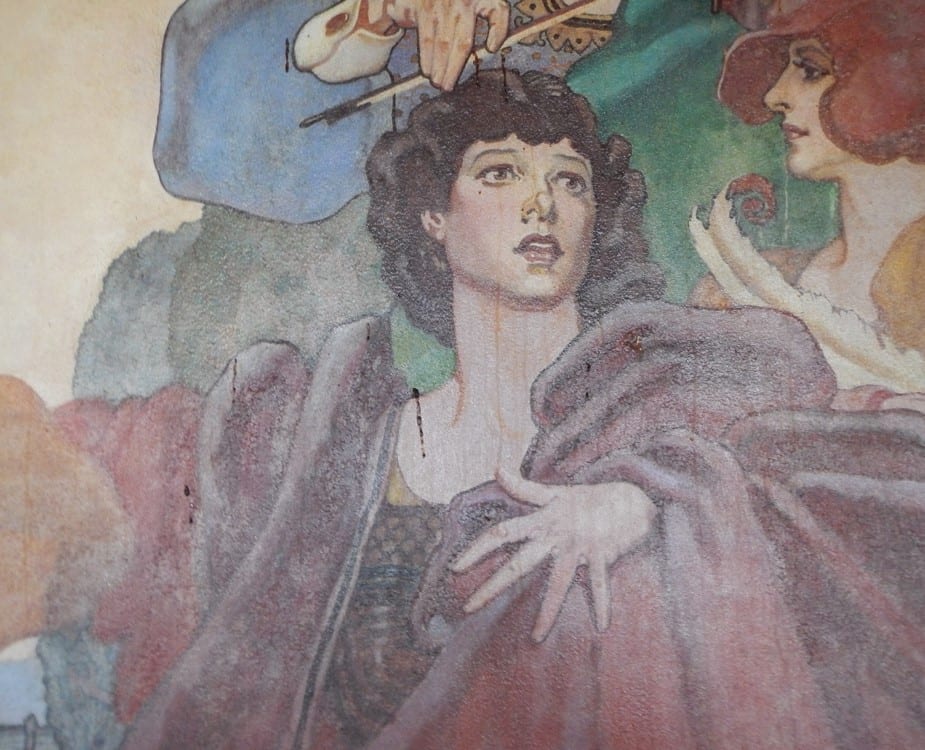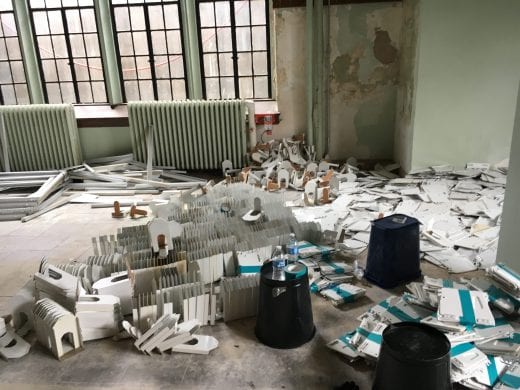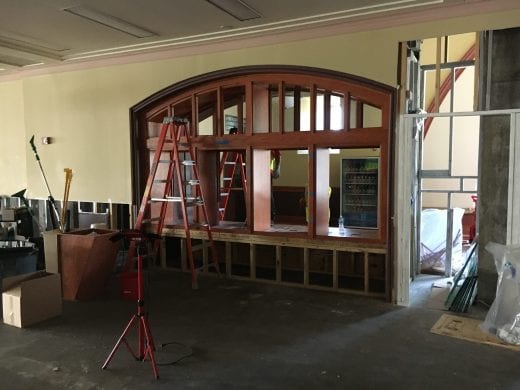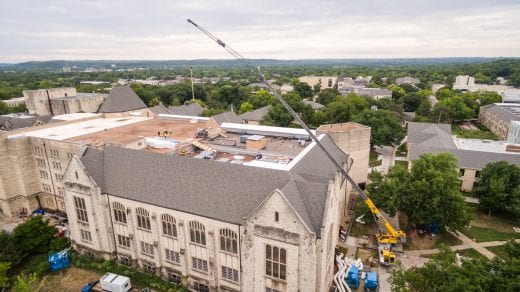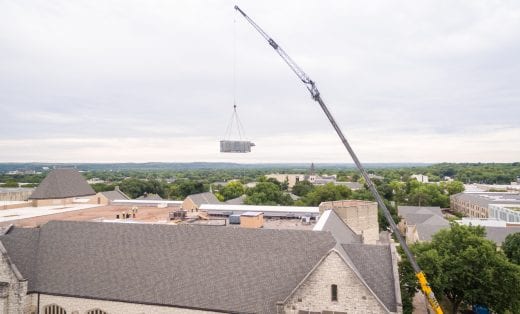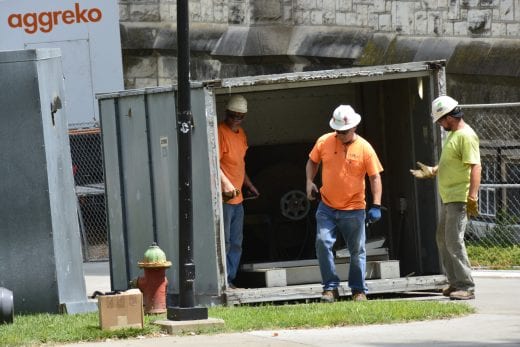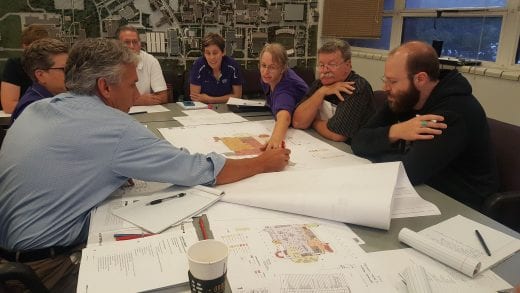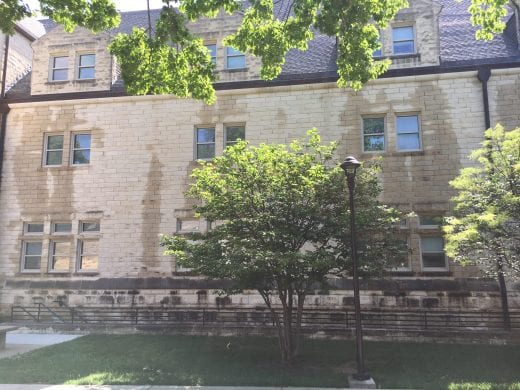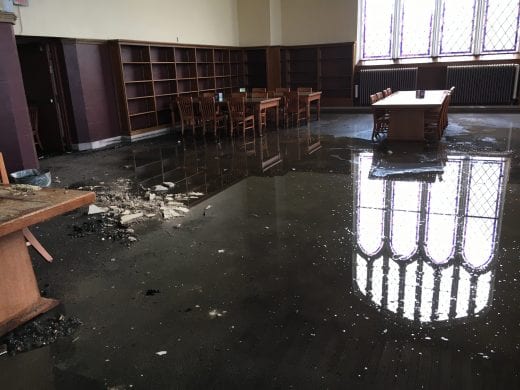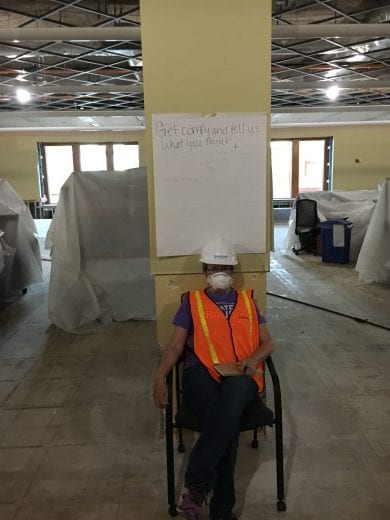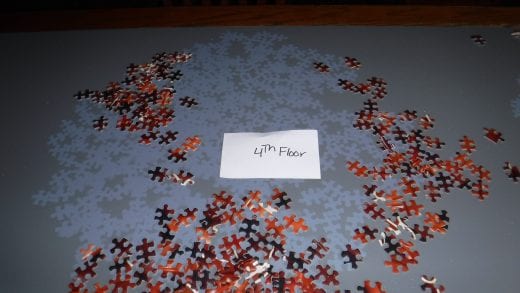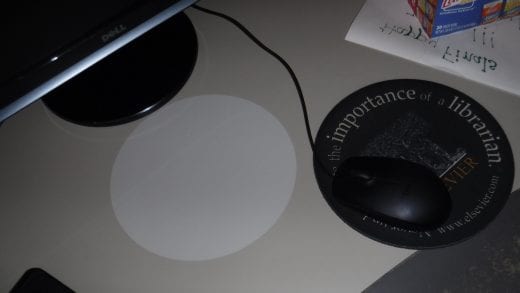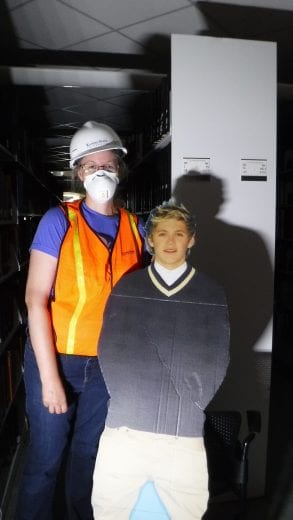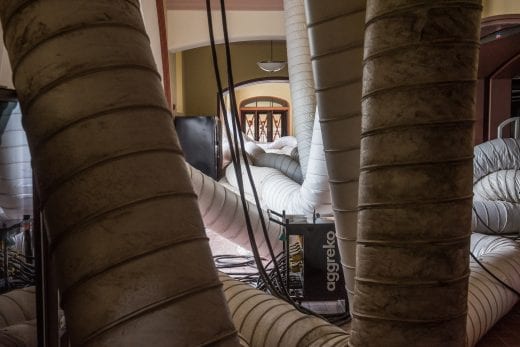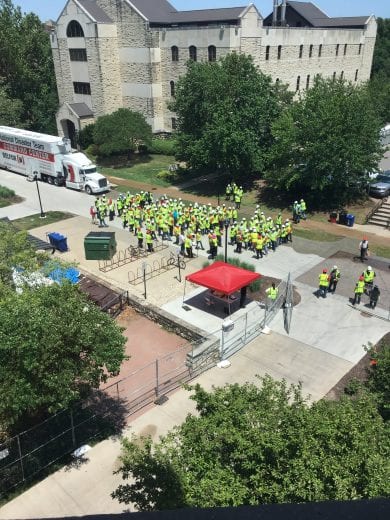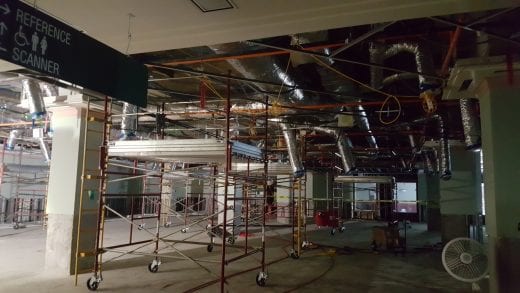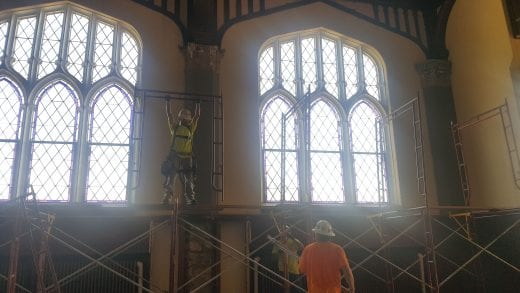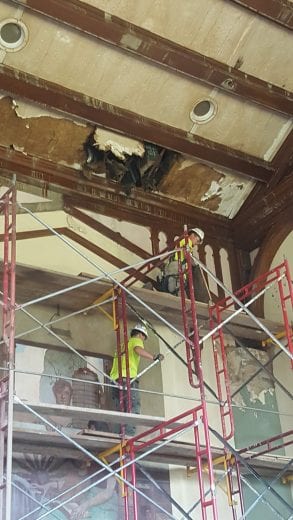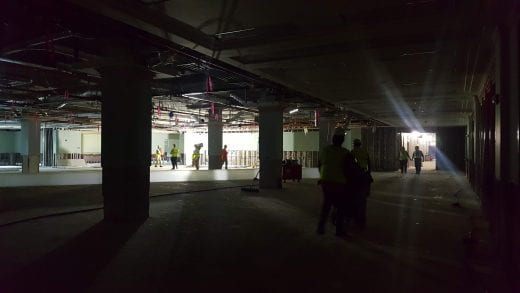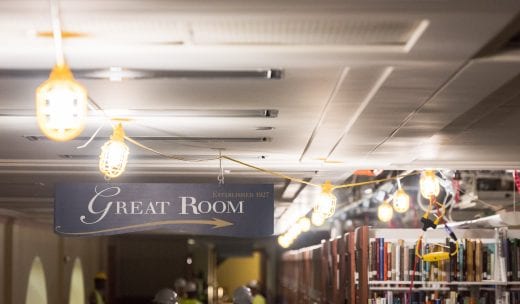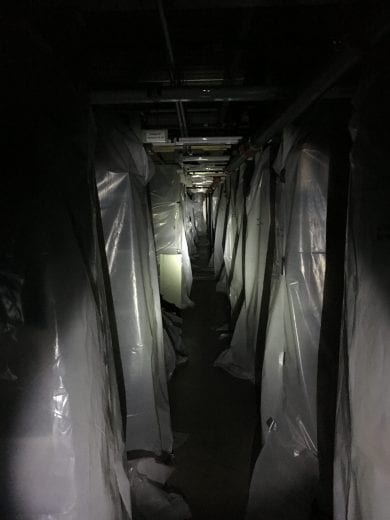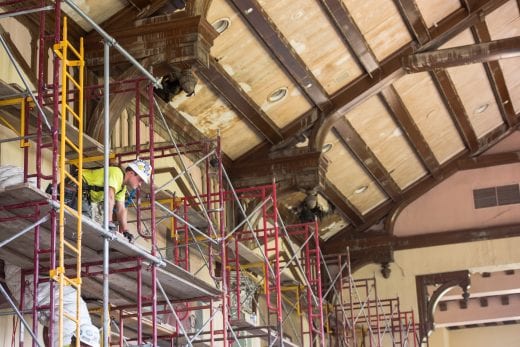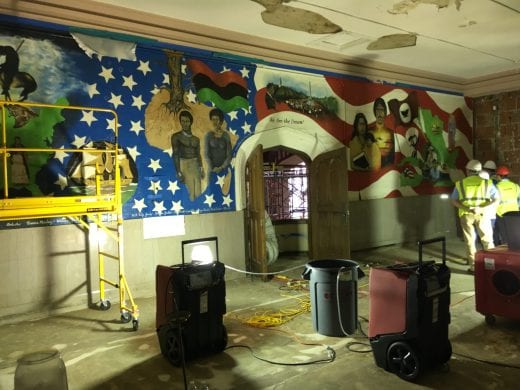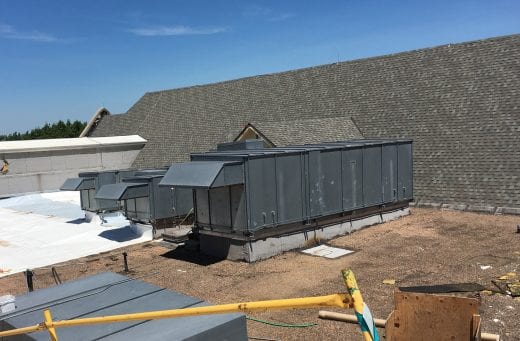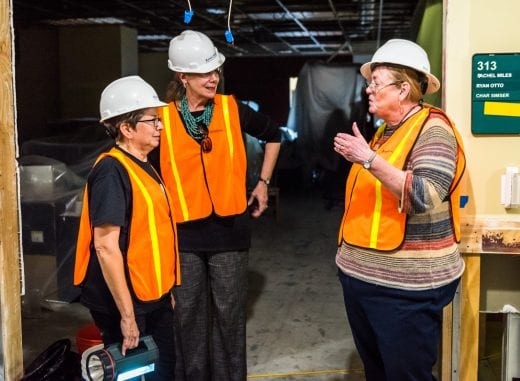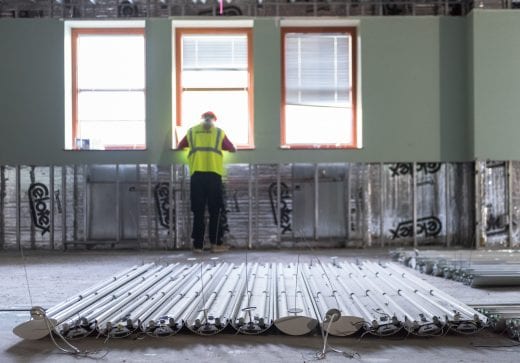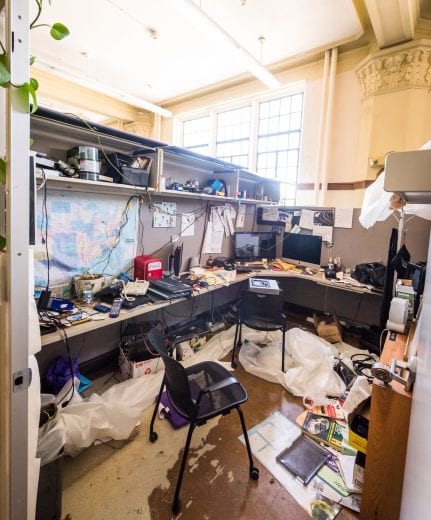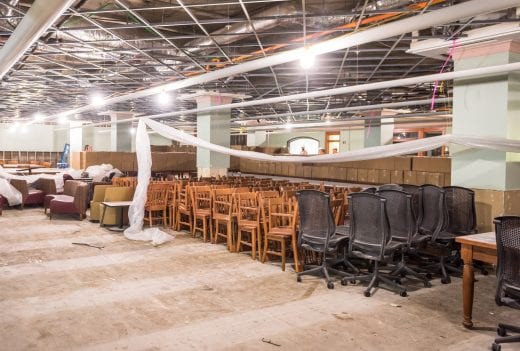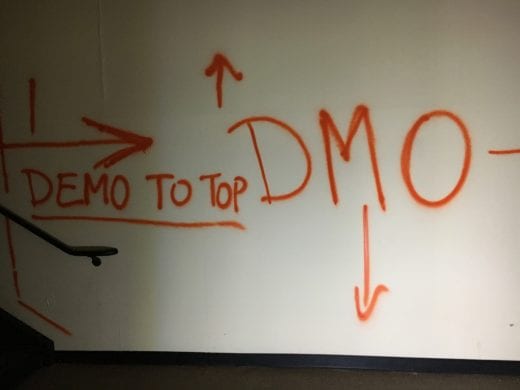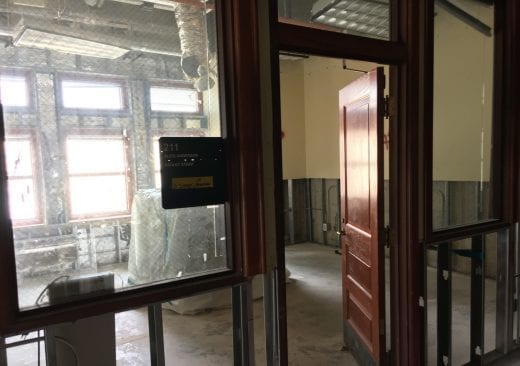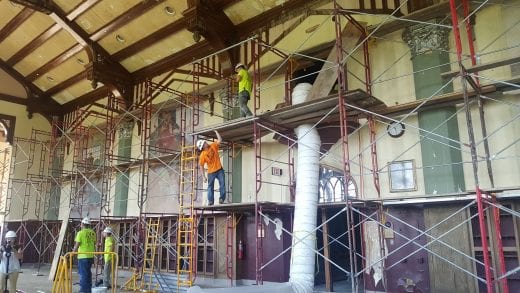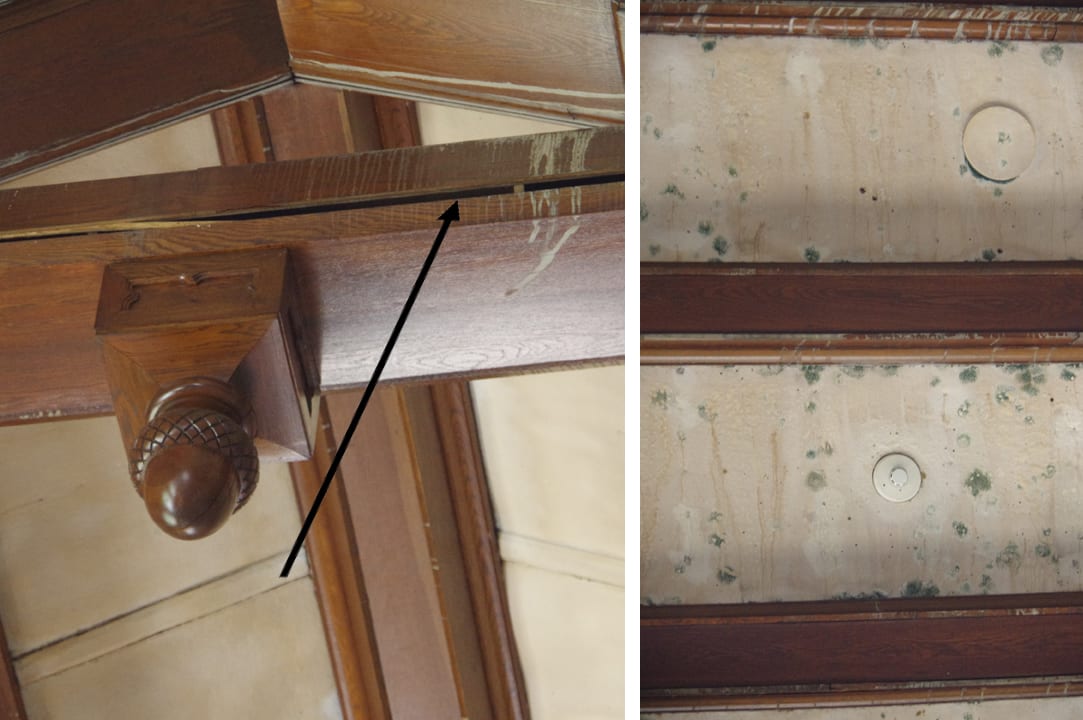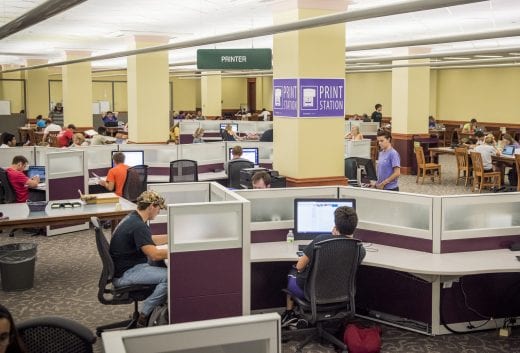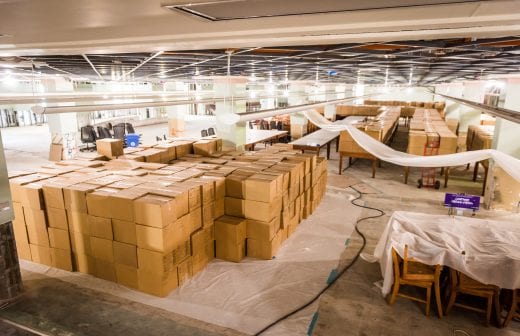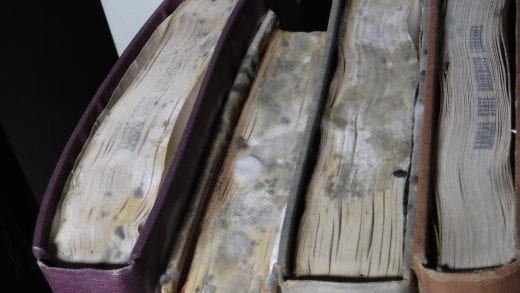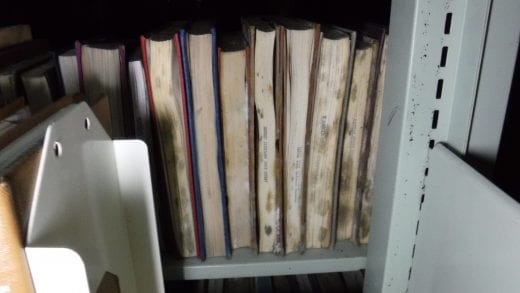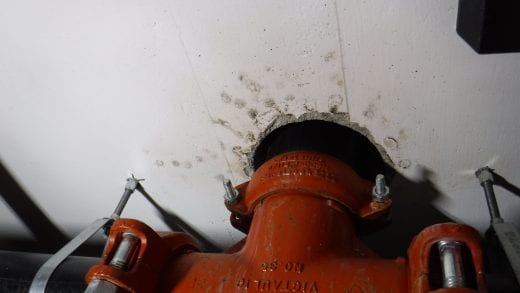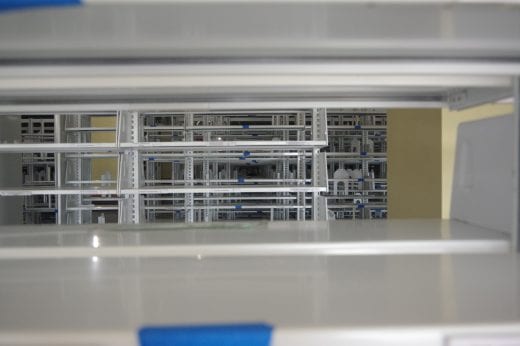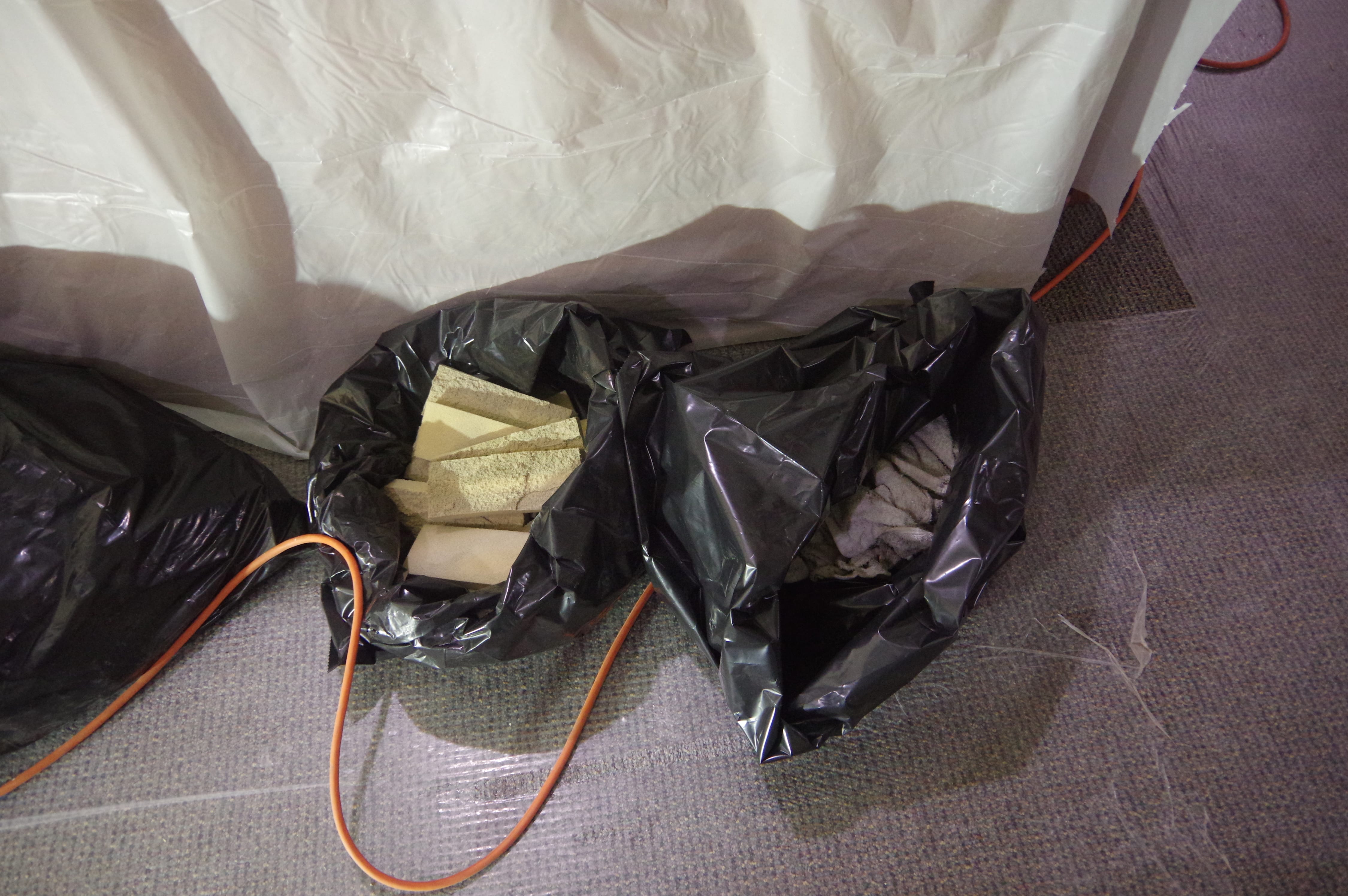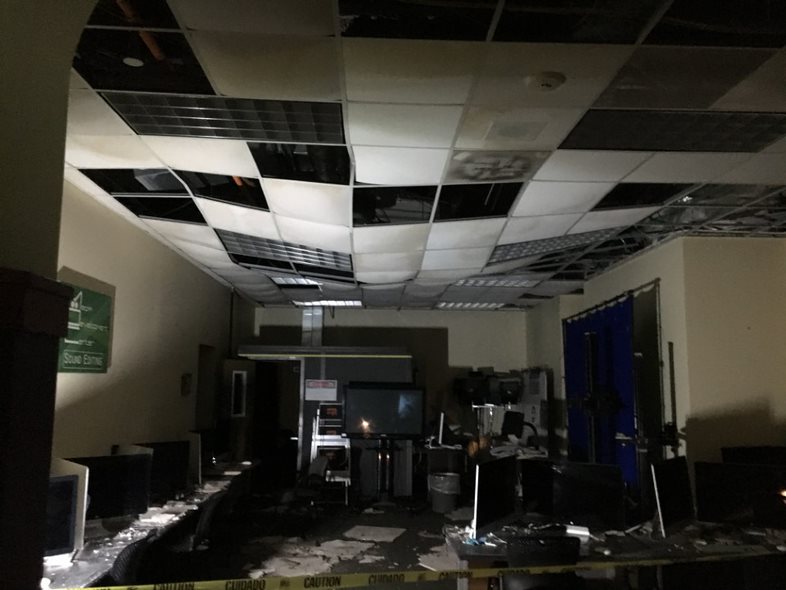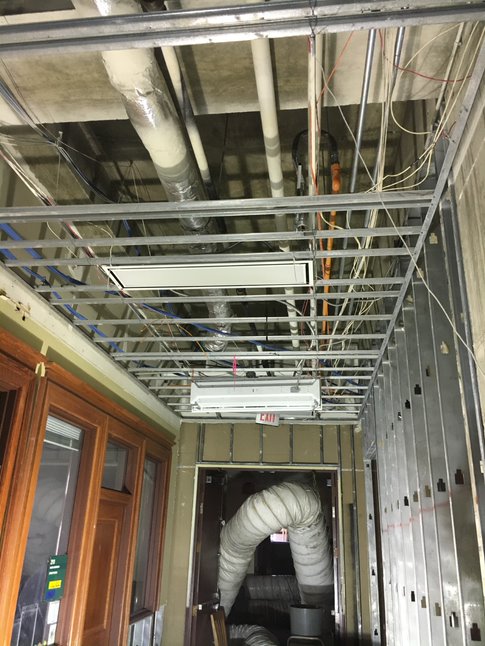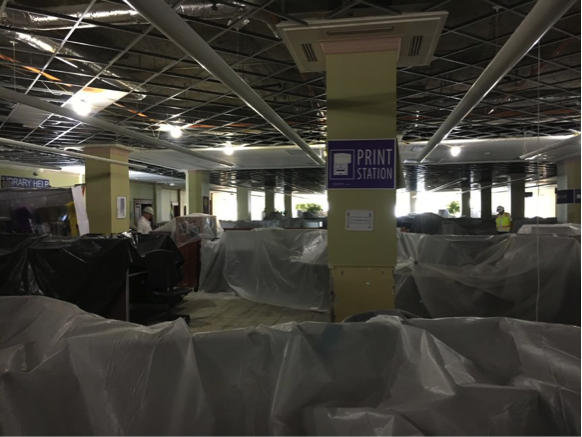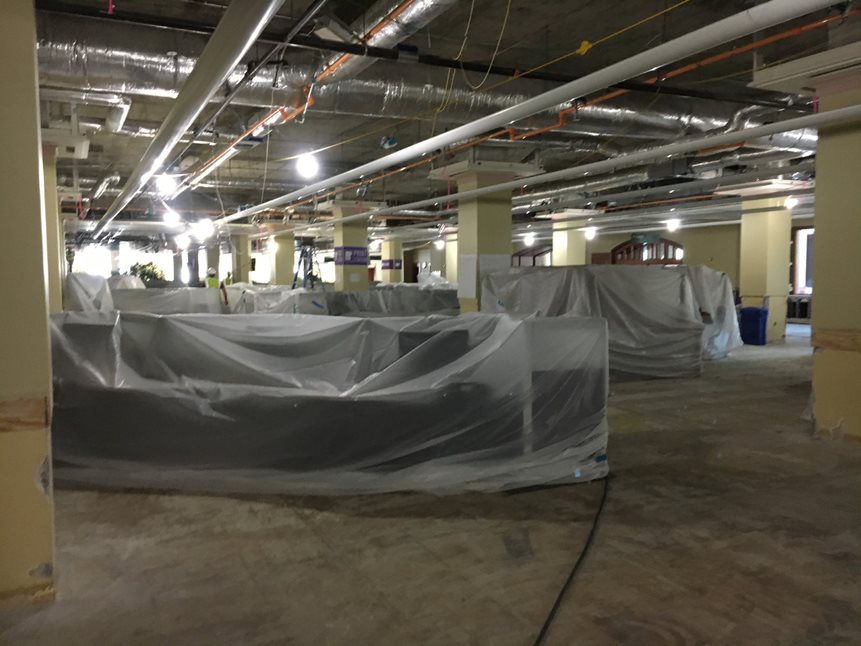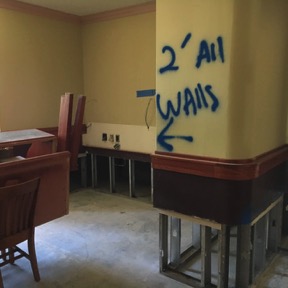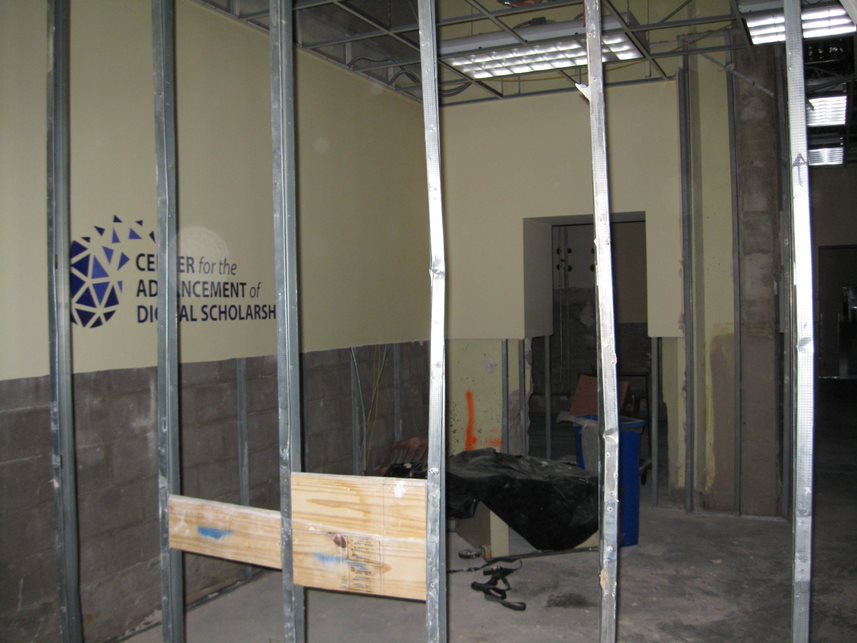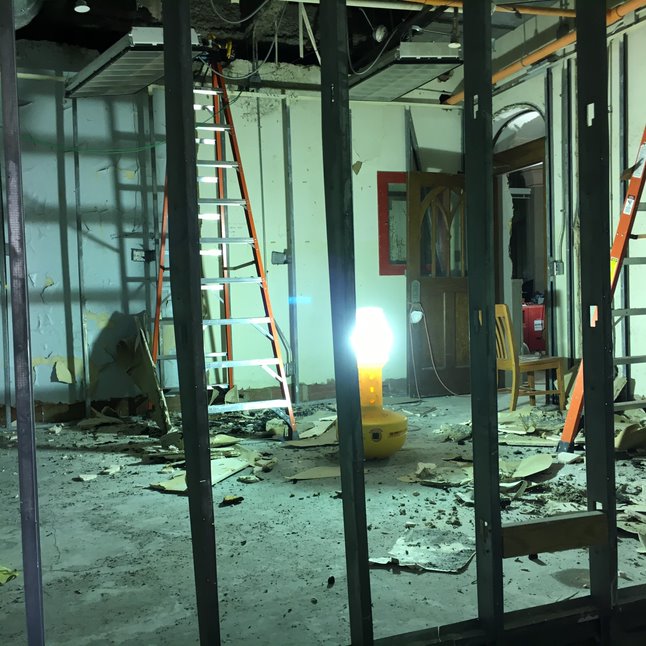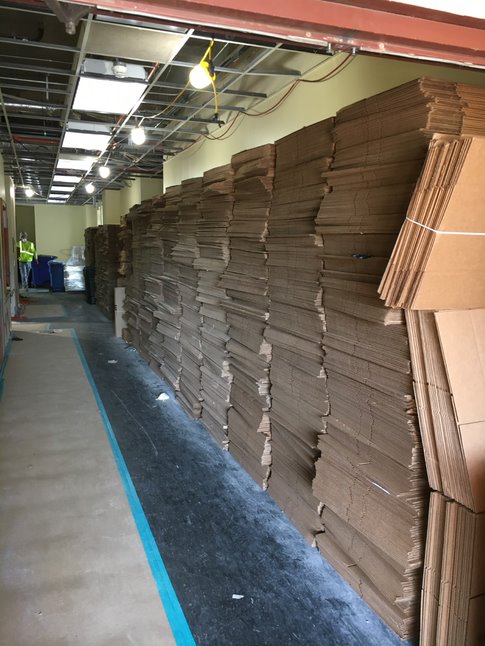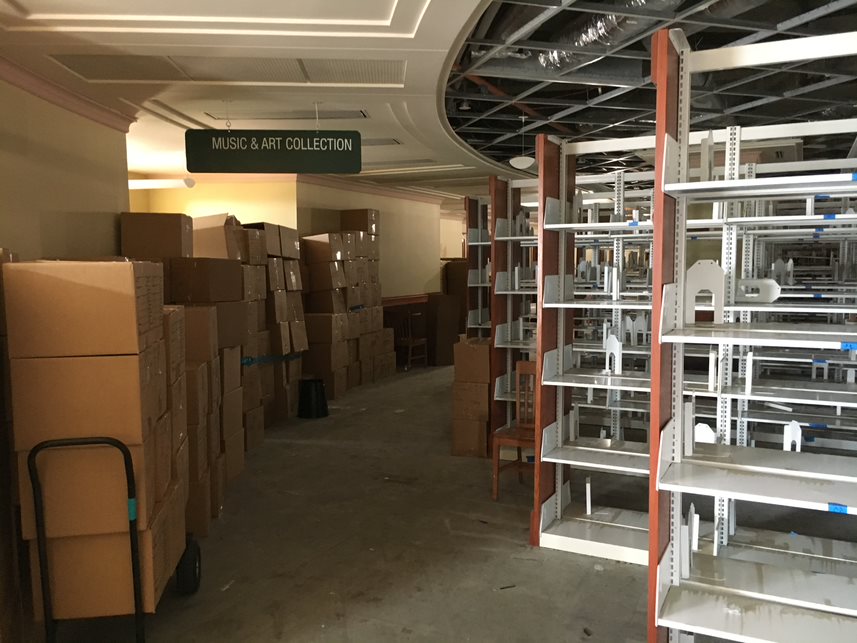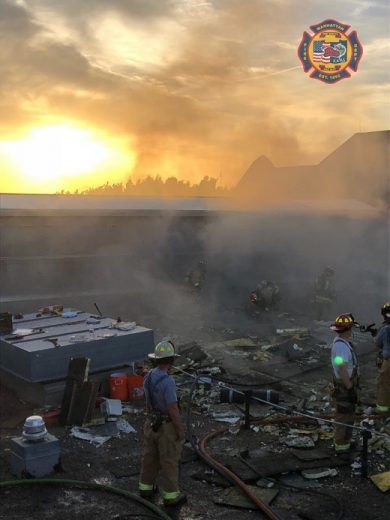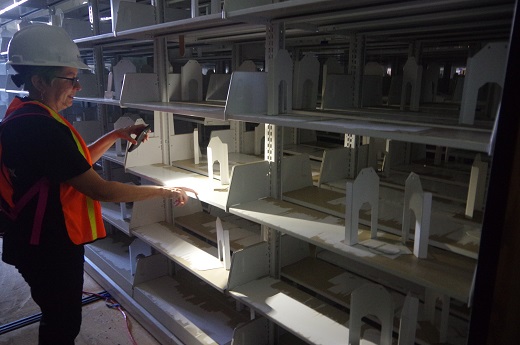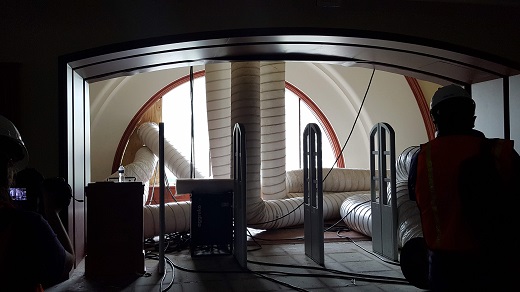Librarians are pretty obsessive about tracking everything in their collections. It’s all meticulously cataloged, which allows us to identify where each item is at any given point in time, who has it, and when it’s coming back.
Cataloguing pieces of a mural? The oak beams from the Great Room? A 50-pound solid oak acorn finial? That’s a little out of our wheelhouse.

Fortunately, John Canning Company is in charge of disassembling Historic Farrell Library so it can be put back together better than ever. We’re confident that there will be no Humpty Dumpty situations on their watch.
Let’s set the scene: There’s a coupla big ol’ holes in Farrell Library. Charred, scary holes that have been covered by a temporary roof.

Below that, you have the dance floor. That’s what they call the temporary plywood floor built on top of the metal scaffolding that fills the entire Great Room. We don’t want to keep those holes, so the dance floor gives workers access to the ceiling where they can begin the process of removing the fire debris to replace the ceiling and roof.
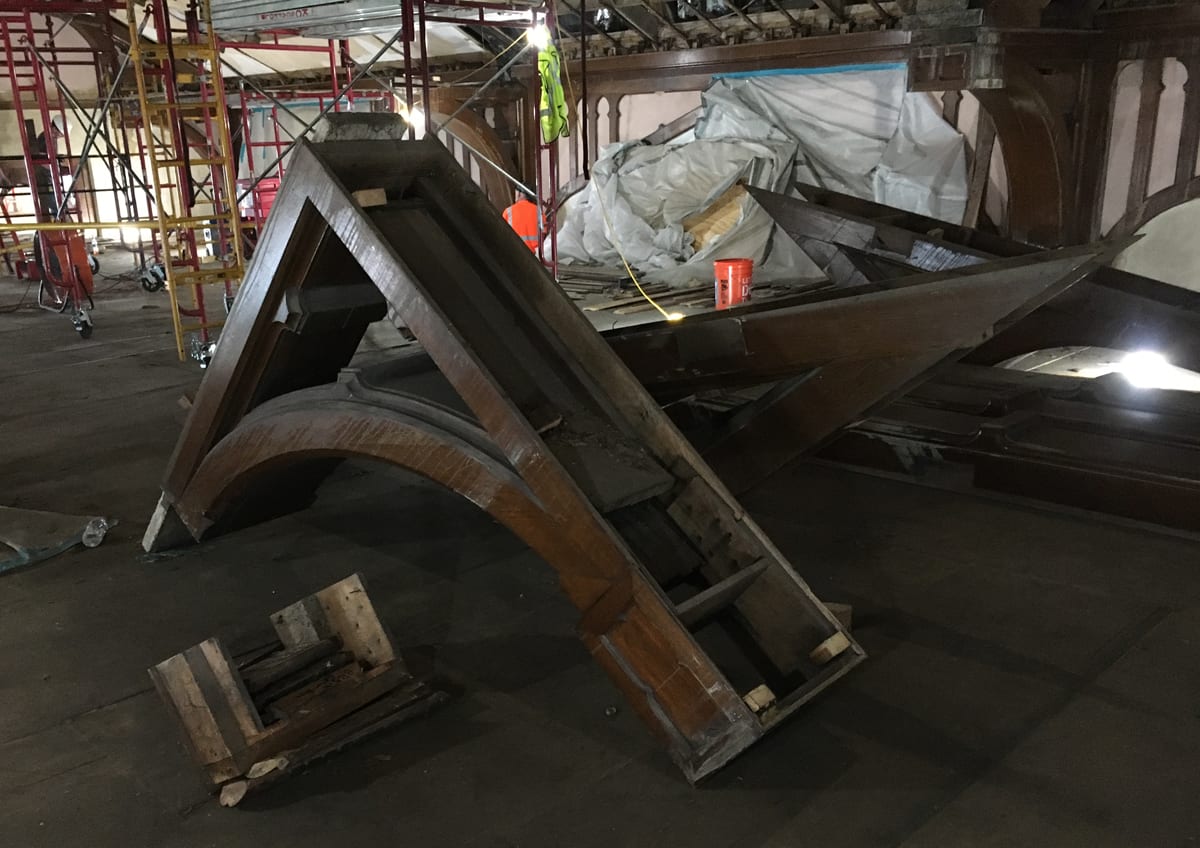
Workers are carefully taking down the woodwork that lends the Great Room much of its historic character. It’s a little like high-stakes Jenga: Removing, labeling and relocating each piece of wood is a delicate process.
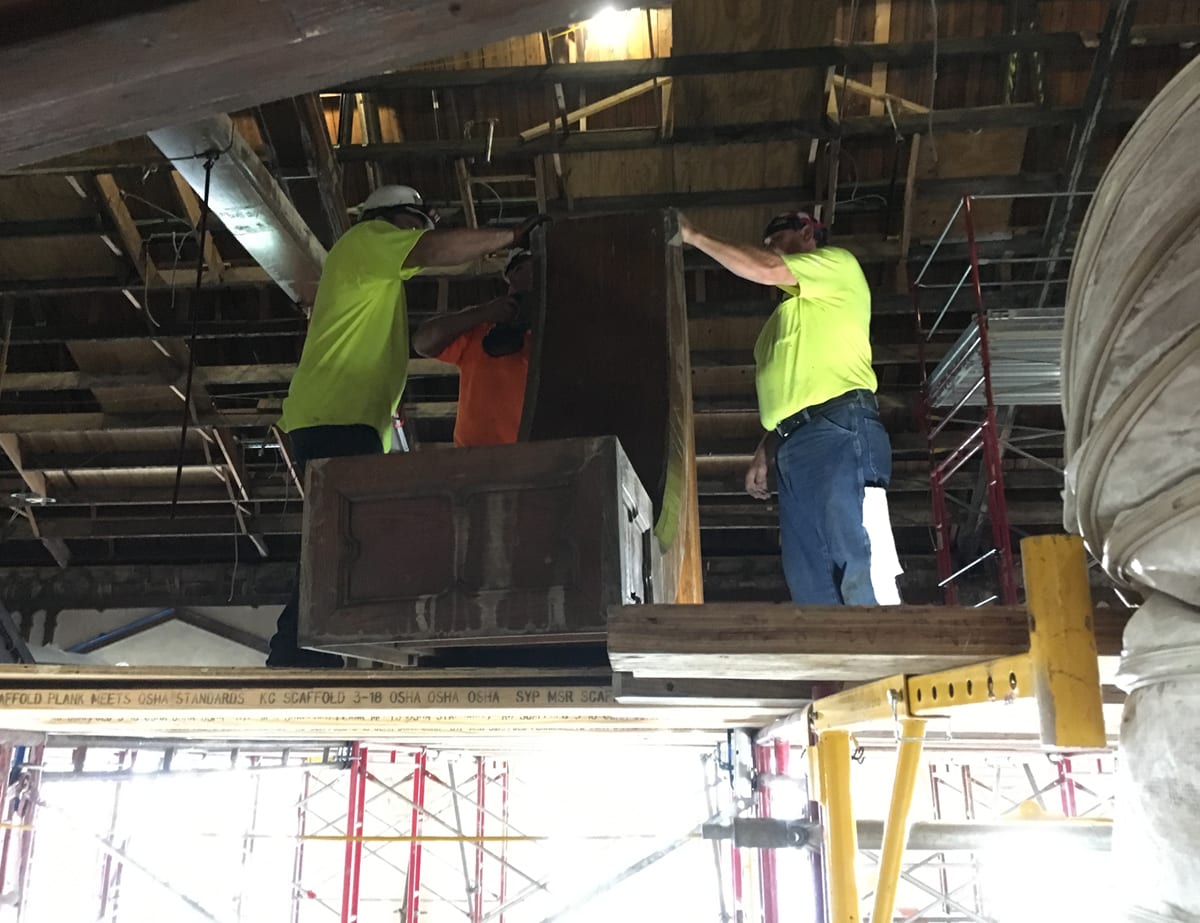
When Farrell Library is sporting a new ceiling and roof sans holes, it will be time to reverse-Jenga all of that woodwork. We can’t wait to see it back where it belongs!

Over in the Richard L. D. & Marjorie J. Morse Department of Special Collections, librarians have been going hands-on to pack out the Libraries’ unique research collections and rare materials. This area of the building mainly experienced smoke damage, and we initially hoped the books and other holdings could be cleaned on site. It’s become clear, though, that in order to keep them safe, everything needs to be transported to secure, reliably conditioned space.
“We should have everything out before the end of September,” said Associate Dean of Libraries Mike Haddock. “It’s been a slow process, but we can finally see the light at the end of the tunnel.”

The remaining special collections materials will join the 140,000 boxes that have already been sent to one of the three offsite storage facilities we’ve contracted to keep everything safe. The newest location in our stable of stables is one of Underground Archive & Storage’s facilities, a former limestone mine in Kansas City, Mo.

Now, it might not have been the first thing on everyone’s mind after the fire, but we had materials on order that arrived over the summer. We were a little busy, and we weren’t able to make those available … until now!
NEW K-State Libraries materials that were destined for Hale Library are being held in Seaton Hall. You can visit Library Help in the Union and ask for the item you want in person; we’ll retrieve it on the spot. Alternately, you can make your request through our website and specify which library help desk you’d like to pick your item up at.
And, as we look to the future, we continue our work with the architects from PGAV. They recently completed “like-for-like drawings”: PGAV determined what the building looked like right before the fire. Now those drawings go to a contractor who assigns what the replacement costs would be if we were to rebuild Hale Library as it was. These are essential steps that have to happen before the various parties involved assign a dollar amount to the total damages. Only after that is completed will we know how much K-State will receive from the insurance companies.

Until then, if you ever have questions you’d like us to address in this blog, please comment below or contact us at libcomm@ksu.edu.
And to everyone who has been following along with us on this journey, thank you! Your comments and words of encouragement mean the world to us!




